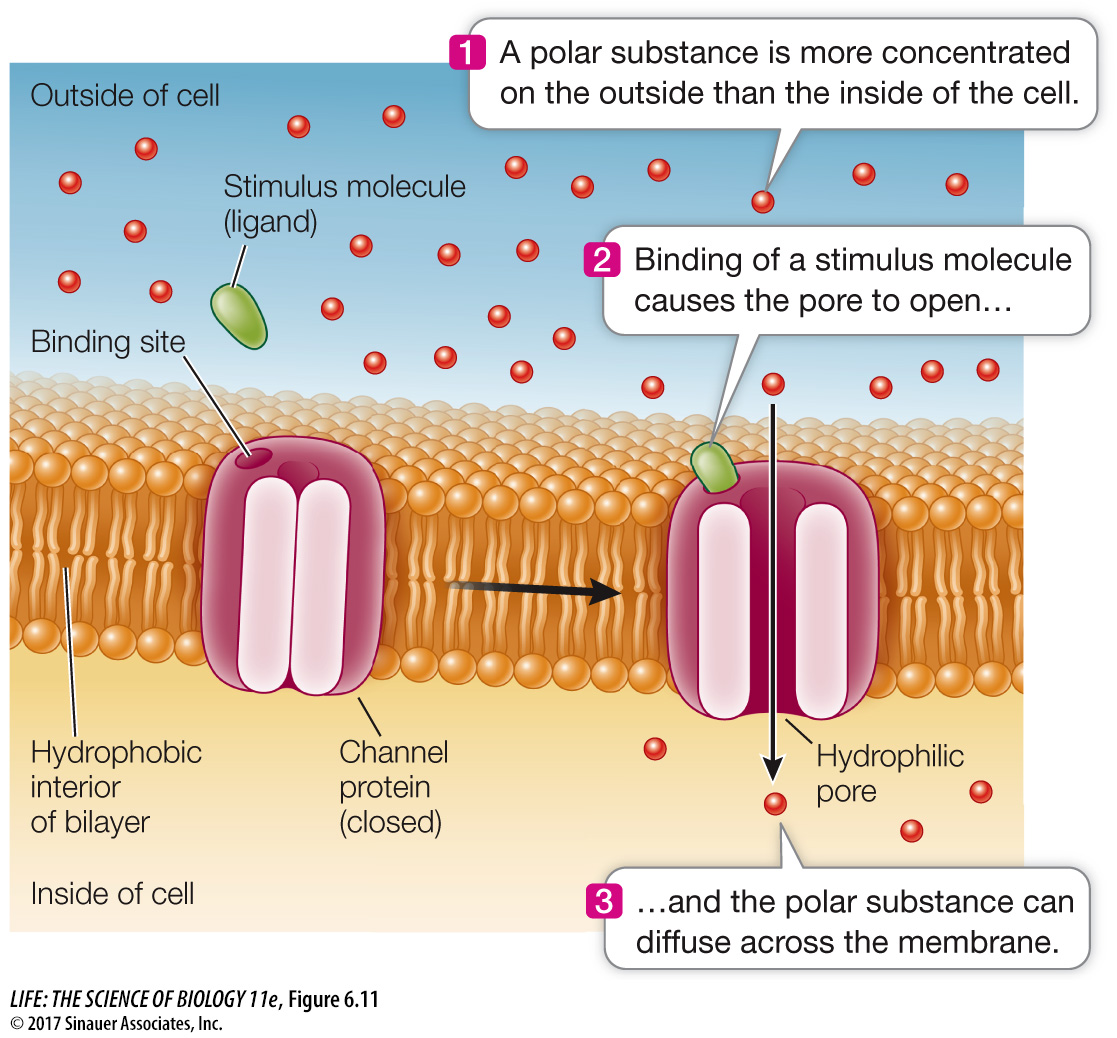Diffusion may be aided by channel proteins
As we saw earlier, polar or charged substances such as water, amino acids, sugars, and ions do not readily diffuse across membranes. But they can cross the hydrophobic phospholipid bilayer passively (that is, without the input of energy) in one of two ways, depending on the substance:
Channel proteins are integral membrane proteins that form channels across the membrane through which certain substances can pass. Note that these are not channels in the widely used sense of the word (meaning open to the environment like a canal) but tunnels (surrounded by the membrane protein).
Carrier proteins bind substances and speed up their diffusion through the phospholipid bilayer.
Diffusion that is aided by channel proteins or carrier proteins is called facilitated diffusion. The substances diffuse according to their concentration gradients, but their diffusion is facilitated by protein channels or carriers. Although these proteins enhance the rate of diffusion, facilitated diffusion, like simple diffusion, does not require any input of energy.
ION CHANNELS The best-
*connect the concepts Ion channels play an important role in the excitability of nervous tissues. See Key Concept 45.2.
Just as a fence may have a gate that can be opened or closed, most ion channels are gated: they can be opened or closed to ion passage (Figure 6.11). A gated channel opens when a stimulus causes a change in the three-

AQUAPORINS FOR WATER As you saw in the opening story of this chapter, water can cross membranes through protein channels called aquaporins. These channels function as a cellular plumbing system for moving water. The aquaporin channel is highly specific. Water molecules move in single file through the channel, which excludes ions so that the electrical properties of the cell are maintained. Aquaporins were first identified when a protein from red blood cell membranes was inserted into frog oocytes (immature egg cells). The membranes of these cells are normally impermeable to water, but the membranes of the cells treated with aquaporins became much more permeable (Investigating Life: Aquaporins Increase Membrane Permeability to Water).